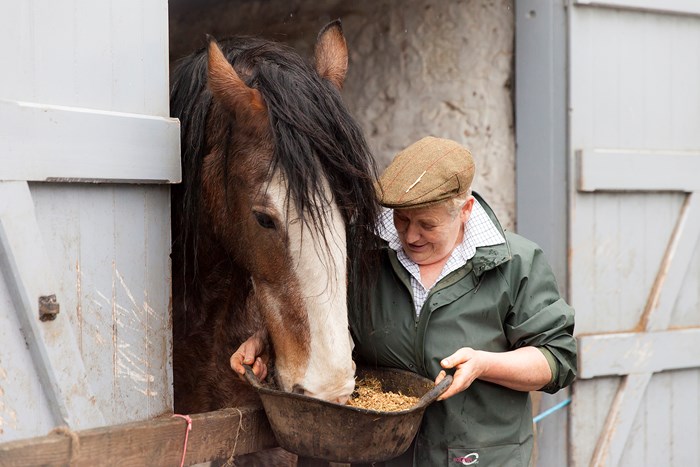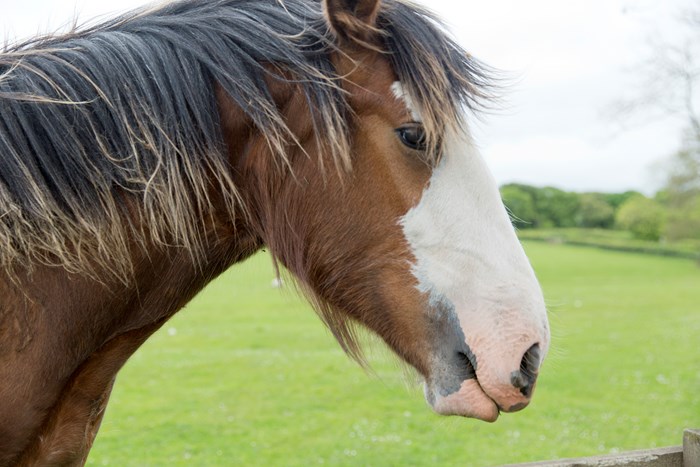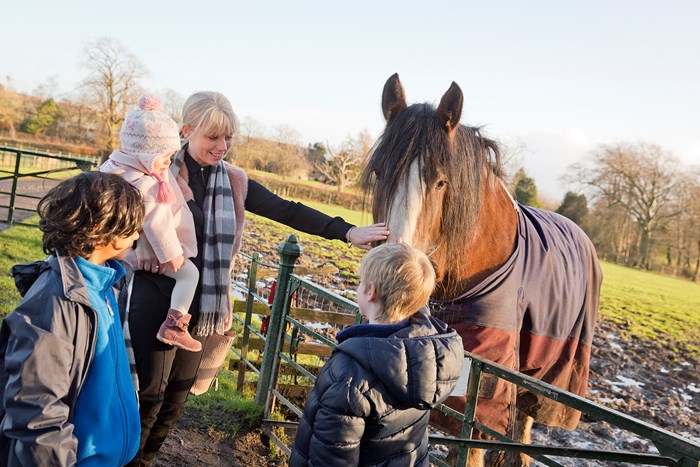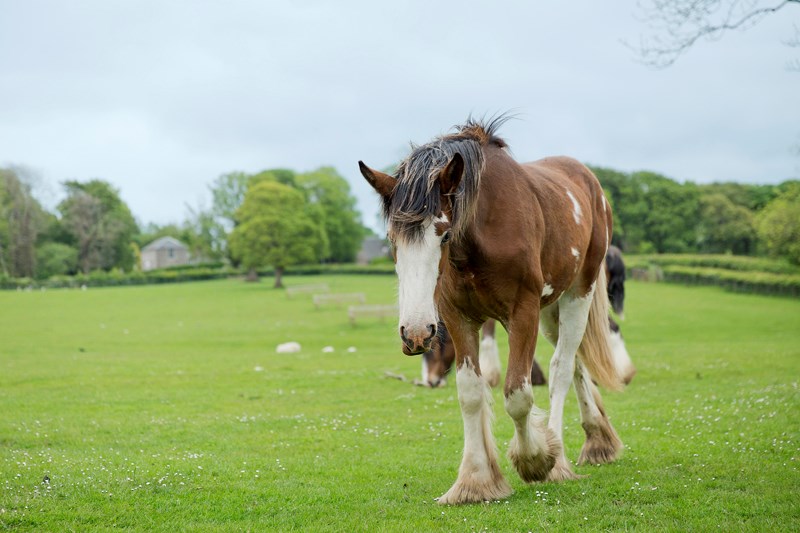Key in a search term below to search our website.
Key in a search term below to search our website.
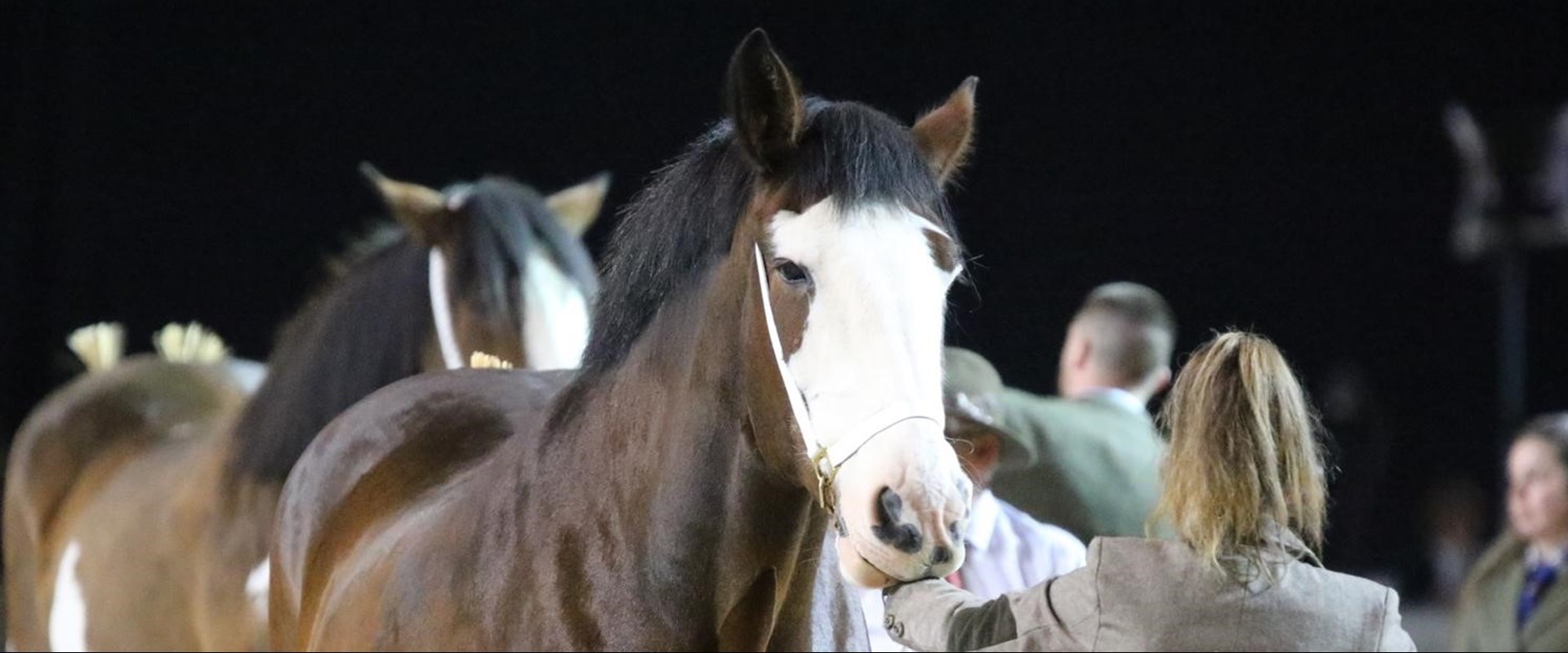
© © Jim Spiers
Our beautiful Clydesdale horses are one of the star attractions at the National Museum of Rural Life.
The Clydesdale horse is a native breed of Scotland originating from the Lanarkshire area. It was originally bred for heavy farm and industrial work and can be seen working as draught horses, in logging, driving and agriculture. Clydesdales can also be ridden and are often seen this way at shows.
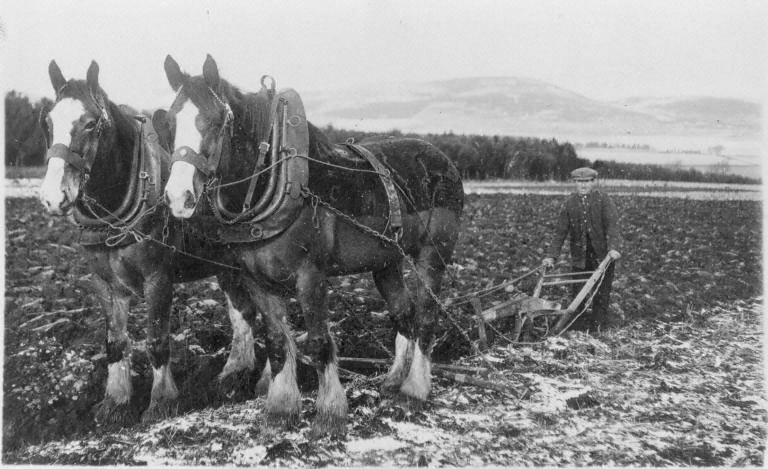
John Lumsden ploughing with two Clydesdales in Balkemback, Tealing, Angus, 1931. Part of the Scottish Life Archive.
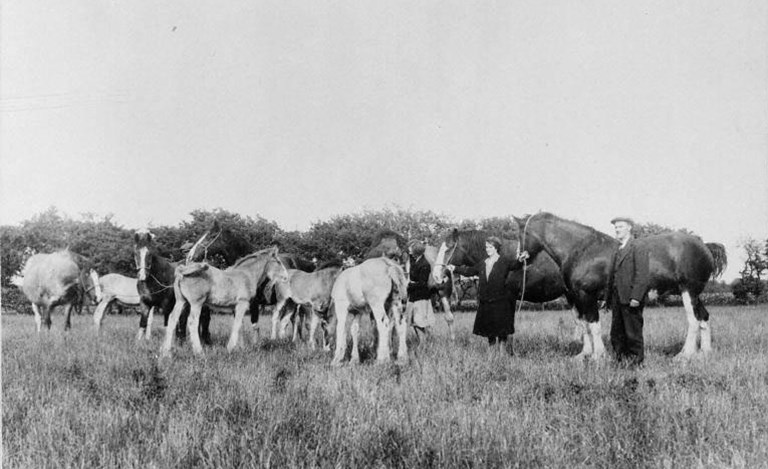
Clydesdale mares and foals, Waughton Farm, East Linton, 1944. Part of the Scottish Life Archive.
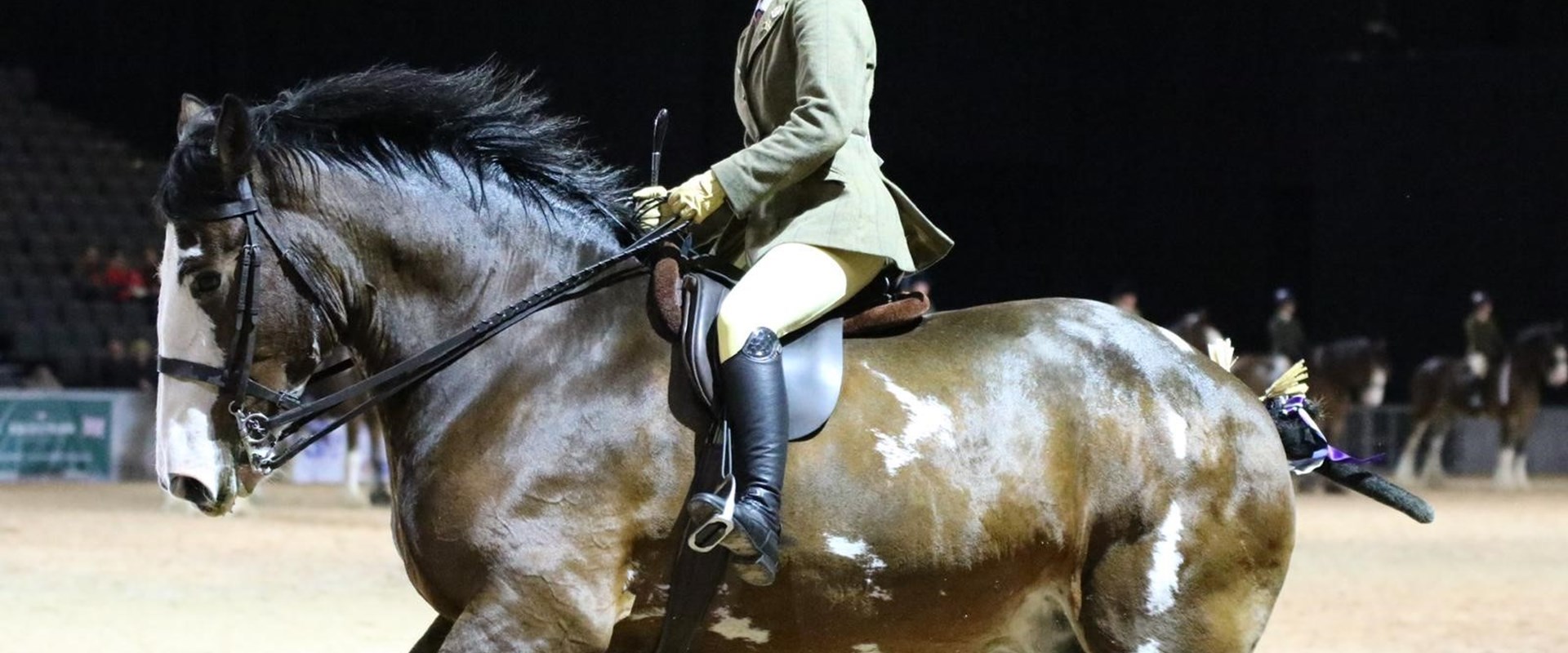
Anna the Clydesdale competing at the World Clydesdale Show, Oct 2022 © Jim Speirs
The Clydesdale breed was founded in the early eighteenth century when two breeders, John Paterson of Lochlyoch and the 6th Duke of Hamilton, imported Flemish stallions and mated them with native draught mares in the Clyde valley.
The Clydesdale's popularity peaked immediately after the First World War. In 1920 the Clydesdale Horse Society's stud book recorded a record number of entries, 6,870.
At its peak, Scotland had around 140,000 farm horses, most of which were Clydesdales or part Clydesdale.
Today, Clydesdales are listed as vulnerable by the Rare Breeds Survival Trust, with only 500-900 remaining.
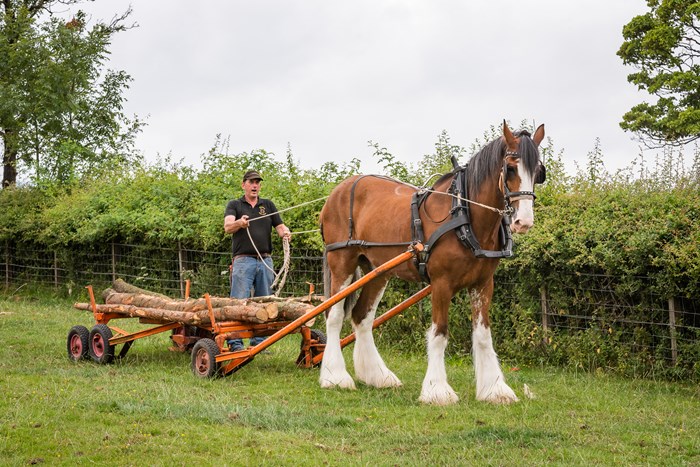
A Clydesdale demonstrating logging at the Heavy Horse Show © Andy Catlin
The Clydesdale was originally being bred for heavy farm and industrial work but its large open hooves were better suited to city work than narrow arable furrows. It is noted for its high stepping, showy action, which makes it one of the most elegant heavy horses.
* The unit by which the height of a horse is measured.
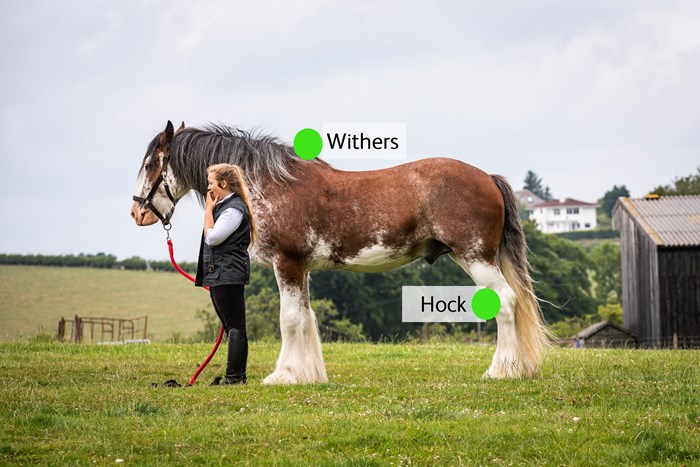
Clydesdale horse terminology ©Andy Catlin
In keeping with the traditions of the farming in Lanarkshire, the Wester Kittochside farm at the National Museum of Rural Life is home to Clydesdale horses. Meet them up at the farm or in the fields.
